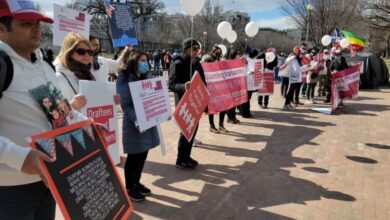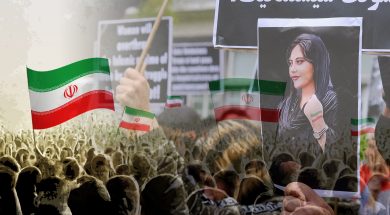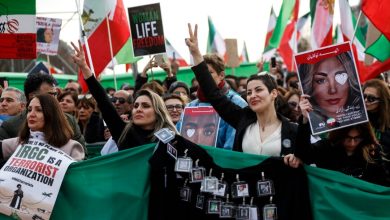The Islamic Revolutionary Guard Corps (IRGC) is widely recognized as Iran’s most powerful military and security institution. But beyond its battlefield operations, intelligence activities, and suppression of dissent, it operates an expansive, opaque economic empire. This empire reaches into every major sector of Iran’s economy—from oil, gas, and telecommunications to banking, construction, and black-market smuggling.
What began as a revolutionary guard force in 1979 has become a vast cartel that undermines Iran’s economy, crushes private enterprise, and channels national wealth into repression and regional conflict. This article dissects the scope, structure, and consequences of the IRGC’s economic empire—and why dismantling it is essential for Iran’s future.
1. Origins of Economic Expansion
The IRGC was born during the Islamic Revolution to protect the new theocratic regime. Its economic rise began in the aftermath of the Iran-Iraq War (1980–1988). The country needed rebuilding, and the IRGC, already a powerful paramilitary force with a loyal base, positioned itself as a construction and development actor.
In the 1990s, the Supreme Leader and political elites began awarding the IRGC massive infrastructure projects without public tender. The creation of Khatam al-Anbiya Construction Headquarters formalized the Guard’s transformation into a corporate entity.
2. Khatam al-Anbiya: The Core of the Empire
Khatam al-Anbiya (Seal of the Prophets) is the IRGC’s primary engineering and construction arm. It reportedly controls hundreds of subsidiaries and manages tens of billions of dollars in contracts.
Key Sectors:
• Oil & Gas: South Pars, Azadegan, and petrochemical infrastructure
• Mining & Metals: Extraction and processing
• Transportation: Railways, ports, tunnels, and roadways
• Urban Development: Housing and infrastructure in major cities
Because Khatam al-Anbiya is directly tied to the IRGC, it receives no-bid contracts, tax exemptions, and preferential financing, crowding out private firms and centralizing power.
3. Banking, Finance, and Insurance
The IRGC controls or influences major financial institutions that funnel capital into its operations.
Notable Entities:
• Mehr Eqtesad Bank: Formerly tied to the Basij (an IRGC paramilitary), merged into Sepah Bank under sanctions pressure
• Ansar Bank: Merged with Sepah Bank in 2020 but historically funded IRGC-linked companies
• Etemad Mobin Consortium: IRGC-linked holding company with major shares in telecom, banking, and insurance
These institutions:
• Fund IRGC-affiliated businesses
• Enable sanctions evasion and money laundering
• Provide financial support to retired or wounded IRGC members
4. Telecommunications: Surveillance Through Ownership
In 2009, the IRGC gained de facto control over Iran’s telecommunications infrastructure when Etemad Mobin, a front consortium, acquired a controlling stake in the Telecommunications Company of Iran (TCI).
Consequences:
• State surveillance of phones, SMS, and internet traffic
• Direct access to metadata on millions of Iranians
• Control over censorship mechanisms and shutdown capabilities during protests
This acquisition marked a strategic shift—economic control used to strengthen ideological dominance.
5. The Black Market Empire
In addition to official sectors, the IRGC operates a vast black-market economy, including:
• Oil and fuel smuggling
• Weapon sales to proxies
• Illegal imports and exports via ports under IRGC control
• Drug trafficking routes through Afghanistan and Baluchistan
Ports like Bandar Abbas, which the IRGC influences, serve as gateways for unregulated commerce, denying billions in revenue to the national budget.
6. Sanctions Evasion and International Front Companies
The IRGC has become expert in circumventing sanctions, especially through:
• Shell companies in Malaysia, UAE, and Turkey
• Dual-use technology procurement (civilian goods with military applications)
• Cryptocurrency mining and exchanges
• Barter trade (e.g., oil-for-gold deals with Venezuela or Syria)
Notorious Examples:
• Yas Holding: IRGC-linked front company involved in a $2.7B embezzlement scandal
• Kasco Shipping: Involved in sanctioned oil transport operations
• Rahbaran Omid Darya: Tied to IRGC oil exports
7. IRGC-Controlled Foundations (Bonyads)
In addition to direct business holdings, the IRGC benefits from bonyads—massive religious-economic foundations that control real estate, capital, and tax-exempt enterprises.
Key Examples:
• Bonyad-e Mostazafan (Foundation of the Oppressed)
• Bonyad Shahid (Martyrs Foundation)
These institutions are officially charitable, but function as shadow banks and real estate empires, often investing in projects that benefit IRGC commanders.
8. Impact on the Iranian Economy
The IRGC’s domination of Iran’s economy has devastated private sector growth and social equity:
• Crowded out competition: Private companies can’t compete with IRGC’s size and access
• Deters foreign investment: Firms fear secondary sanctions and IRGC links
• Fuels inflation and unemployment: Cronyism and inefficiency distort markets
• Drains national budget: Billions allocated to IRGC-affiliated projects rather than healthcare, education, or public services
“Iran doesn’t have an economy. It has a security apparatus that pretends to be one.”
— Former Iranian economist in exile
9. Corruption, Embezzlement, and Lack of Oversight
The IRGC answers only to the Supreme Leader. Its economic activities are immune to audits, transparency laws, or parliamentary oversight.
Resulting Problems:
• Systemic embezzlement scandals (e.g., Yas Holding case)
• Nepotism and crony contracts for IRGC commanders’ families
• Suppression of investigative journalism and whistleblowers
Citizens are left bearing the brunt of these policies—through fuel shortages, food price hikes, and currency collapse.
10. Funding Repression and Proxy Wars
The profits from the IRGC’s empire are used to:
• Fund Basij paramilitaries who assault protesters
• Build drone and missile programs
• Pay and equip foreign militias (Hezbollah, Houthis, PMF in Iraq)
• Conduct assassination plots abroad
Economic strength enables military aggression and political repression—two sides of the same coin.
11. Enabling Gender Apartheid
The IRGC economy also funds the morality police, surveillance tech, and enforcement systems that target women:
• Mandatory hijab enforcement
• Arrest and abuse of female protesters
• Public surveillance of women’s dress and behavior
• Funding for state TV campaigns that shame women
The economic power of the IRGC is weaponized against Iran’s women every day.
12. IRGC Families and the “Elite Class”
A privileged elite—IRGC commanders and their families—live luxuriously in Iran and abroad:
• Many have dual citizenship in Canada, the UK, or Europe
• Children attend foreign universities
• Wealth is laundered into foreign real estate and offshore accounts
This hypocrisy has bred public outrage, especially during times of economic crisis and protest.
13. The Role of Sanctions and the International Community
Sanctions alone have not dismantled the IRGC empire, but they remain one of the few effective tools.
What Works:
• Magnitsky sanctions on individuals
• Secondary sanctions on companies doing business with IRGC affiliates
• Export controls on dual-use goods
• Sanctions enforcement tech and OSINT to track front companies
14. Civil Society Resistance and Exposure
Despite fear and repression, Iranians are pushing back:
• Whistleblowers leaking IRGC contracts and documents
• Citizen journalists exposing corruption
• Protesters calling out “Sepahi” (IRGC-linked businesses)
• Diaspora movements mapping the IRGC’s global network
Naming and exposing the IRGC economy is a key step in reclaiming Iran’s wealth.
15. Dismantling the Empire: What Must Be Done
A. Policy Demands:
• Full terrorist designation of the IRGC globally
• Sanctions on all front companies and financial arms
• Asset freezes and travel bans on IRGC commanders and families
B. Economic Justice:
• International lawsuits to reclaim stolen funds
• Accountability for IRGC economic crimes in universal jurisdiction courts
• Transparency initiatives to track and map their empire
Conclusion: Reclaiming Iran’s Future
The IRGC’s economic empire is not just a source of wealth—it’s a tool of control. It props up a regime built on violence, stifles entrepreneurship, silences dissent, and funds terror.
Join Our Newsletter!
Stay informed with the latest updates, news, and ways to take action in the fight for justice and global security. Sign up now to get updates delivered straight to your inbox!





